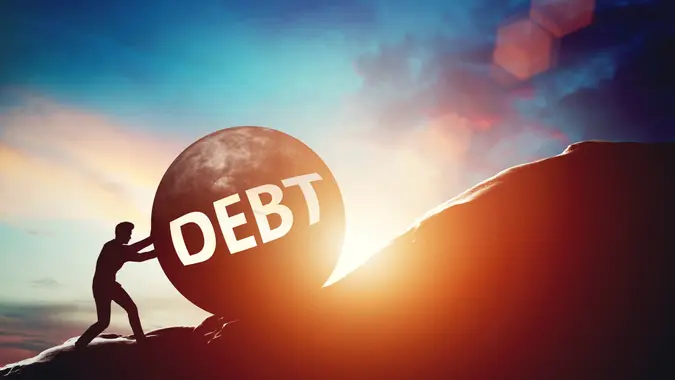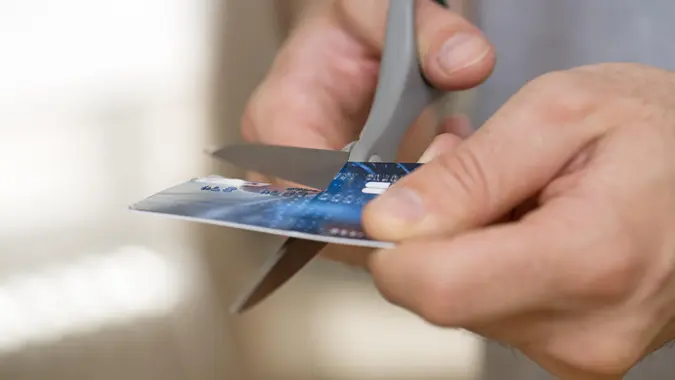5 Red Flags That You’re Drowning in Debt Due to ‘Buy Now, Pay Later’

Commitment to Our Readers
GOBankingRates' editorial team is committed to bringing you unbiased reviews and information. We use data-driven methodologies to evaluate financial products and services - our reviews and ratings are not influenced by advertisers. You can read more about our editorial guidelines and our products and services review methodology.

20 Years
Helping You Live Richer

Reviewed
by Experts

Trusted by
Millions of Readers
One reason “buy now, pay later” (BNPL) loans have become so popular is that they’re so easy. You can usually get them on the spot, at the point of purchase, with no application or hard credit check.
BNPL loans are so easy, in fact, that many U.S. consumers use them for impulse purchases and “emotional spending.” A LendingTree survey found that more than half (52%) of emotional spenders said that these types of loans have made them more likely to emotionally spend. This can lead to a range of financial problems — including building up too much debt.
Here’s a look at five red flags that you are drowning in debt because of BNPL purchases.
Your Other Credit Balances Have Soared
BNPL borrowers are more likely to have higher balances on other credit accounts than other consumers, according to the Consumer Finance Protection Bureau (CFPB). These accounts include personal loans, retail loans, student loans, credit cards and other types of debt.
If you’ve seen your other credit balances surge higher because of BNPL, it’s a sign that you could be drowning in debt.
You Can’t Pay the Minimum Balance
According to Fulton Bank, BNPL loans typically divide the purchase into four equal parts, so you might not have a traditional “minimum” payment like you would with a credit card.
Fulton Bank explained that with a BNPL loan, you pay the first of four payments when you make the purchase. After that, three equal payments are typically made over a period of time, usually six weeks, Fulton Bank noted. However, with some BNPLs, longer payment plans are offered.
The problem comes when you start missing payments on the final three installments — and you also start making lower payments on other credit accounts. This is a sure sign that you likely have too much BNPL debt.
Your Credit Score Has Taken a Hit
These loans have the ability to affect your credit score as well. As Money.com reported earlier this year, the Fair Isaac Corp., which issues the FICO credit score, will incorporate BNPL information into two new scores. “The three credit reporting bureaus — Equifax, Experian and TransUnion — can then decide which score borrowers see and what’s included in their credit reports,” per CNBC.
Additionally, as the CFPB noted, if you don’t repay a BNPL loan, it could be turned over to a debt collector and reported to a credit reporting company, which could ultimately hurt your credit score.
If you start to see your credit score go down because of BNPL activity, then you may have too much BNPL debt.
You’ve Taken Out Multiple BNPL Loans
As the CFPB noted, nearly two-thirds of BNPL borrowers (63%) take out multiple simultaneous loans, while one-third take out loans from multiple BNPL lenders. If you’ve taken out so many BNPL loans that you have a hard time keeping track of them, it’s a red flag that your debt likely has gotten out of control.
You Can’t Get Credit From Other Sources
Many lenders now factor your BNPL activity into their own lending decisions, which means past and current BNPL loans can play a role in whether you’re approved for another type of loan, according to Diamond Credit Union.
If a large number of BNPL purchases prevent you from getting loans or credit elsewhere, it could be a sign that you have too much BNPL debt.
 Written by
Written by  Edited by
Edited by 


























